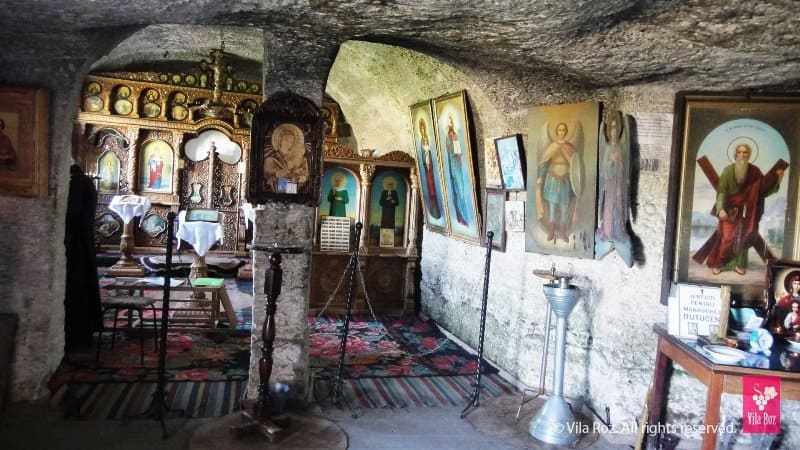Old Orhei (Moldova) archeological complex is located in the Valley of Raut River, a right creek of Nistru River, between Trebujeni and Butuceni villages, Orhei district (some 60 km northeast of the capital, Chisinau).
The medieval town of Orhei established in 15-16th century has influenced the naming of the cultural and archaeological reserve. However, many more archaeological and historical sites can be visited in the region.
Orhei district has many historical monuments and scenic natural landscapes. The rocky formation of irregular shape follows the land’s vibration, and encloses fascinating attractions such as underground galleries, small fortresses and caves that look out to to the river. The lanscape serves as a natural fortress. Following the flow of the river, the canyon separates layers of limestone from the village and contributes to the natural beauty of the site.
Butuceni Cave Monastery
Butuceni cave monastery is located on the steep and rocky terrain of the right bank of the Raut River. Dating from the 10th century, the church along with its eleven monastic cells is one of the most spectacular architectural and historical attractions in Orhei. In 1821, a belfry was placed above the entrance to greet visitors.


Bosia Cave Monastery
Bosia monastery was built in 1675. It is the only cave monastery in Moldova where original inscriptions on the walls have been preserved unaltered. The monastery is made up of eight caves which are partially connected between them. The cave church is about 6 meters long and 4.5 meters wide. Among monks who lived here, the inscriptions on the cliffs mention the monks: Theophilus, Varlaam and Poenachie from Cotelnici.
Pestera Monastery
The cave monastery is a traditional orthodox religious site with access to Raut River through a tunnel. It is located at a height of approximately 60 meters above the river water. Its belfry is an inalienable symbol of the sacred underground sanctuary. In the 18th century, a massive stone cross was installed on top of the hill, above the cave monastery. Nowadays, the cross is a symbol of Old Orhei Moldova and is an intrinsic part of the cave monastery.


Climber’s Rock or the Holm
A cave complex consisting of practically inaccessible cells, largely destroyed by earthquakes, arranged at a height of about 80-100 meters above the river water level.
The Raven’s Rock
A gallery of 20 caves, arranged in four levels, layered one on top of another. Located at some 100 m south of the Holm, at a height of around 80-90 meters above sea level, it’s walls enclose original religious inscriptions classified as medieval relics.
The Monastic Cells’ Rock
Made of a few caves in several tiered levels, it is located just before the Geto-Dacian fortress and the Saint Mary Church. The complex is also known under the name of Raphael’s Hermitage.
The “Turkish” Bath
Remnant of a traditional “Turkish’ Bath. A variant of steam bath, its design comes from the the Golden Horde period. The baths were equipped with sophisticated underground heating, were equipped with pipes for the evacuation of overheated air fumes and water supply networks with multiple streams. Its walls have a thickness of about 1 to 1.10 m. The area of each bath ranges from 23 x 38 m (bath II) to 18 x 28 m (bath III).






